101 km - Ronda, May 10, 2025
Saturday, October 4, 2025
The 101 this past May was significant. The 2025 edition was the 25th anniversary of this important event in the Ronda calendar.
Catering for MTB cyclists, runners, walkers, as well as a shorter junior event. The 101 has a national and international profile.
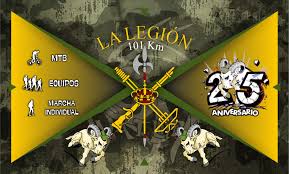
101 km [Image courtesy of ronda natura]
The event is organised by the Spanish Foreign Legion in Ronda.
Participants come from all over Spain, as well as from abroad - 10 foreign countries in 2025.
Me and the 101
I've never taken part and never shall. It sounds like torture. But I admire the people - men, women, children - who do participate.
Some are serious cyclists, others top class runners, and even more are walkers who just fancy the challenge. At all events, it is indeed a challenge, and those who take part and complete the course, 9000 people this year, acquire significant bragging rights.
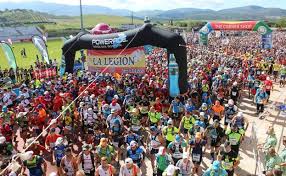
The start [Carreras de montaña]
The route
The 101 route starts and ends in Ronda and visits Arriate, Setenil de las Bodegas, Alcala del Valle, Grazalema, Montejaque and Benaojan.
I live on the route in the pedania of Fuente de la Higuera. So, I usually set up a table, chair, sun umbrella and camping fridge in front of my house and watch some of the race as it passes my door.
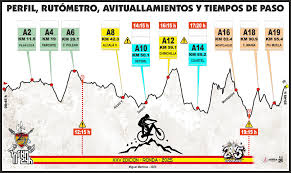
The ups and downs of the 101 [Facebook]
The cyclists tear past first, then come the fast runners. The walkers don't stroll past my house until night-time.
I know people who take part. Borja, from Montejaque, a really good amateur cyclist, passed my house in fifth position in 2023. Sadly, the heat that day got to him and he didn't finish.
Adri, also from Montejaque, is the popular son of "Chico", owner of Bar Adrian in the village.
This year six young soldiers in the army, based in Pamplona (Navarra), rented my house in Montejaque. They took part as runners.
Saturday, May 10th - Race day
La salida - the start
This was at the football stadium of C.D. Ronda. To cope with the numbers of participants, over 9000, the start was staggered.
First off at 08.45 were the cyclists, followed at 09.30 by the runners and walkers. At 10.00 it was the kids, who do a shortened course.
Back home I set up my "stall" outside my house in Fuente de la Higuera, which the race would pass in the course of the 24 hours the 101 lasts. My "stall" is a table, chair, sun umbrella, cold drinks and paraphernalia associated with Spain and Andalucia.
Saul Ortega and Jorge Milan, two legionarios, stopped for a chat and a cold beer. They are both from the Spanish legion barracks in Almeria, members of a group seconded to Ronda to help out.
The leader in the cycle race came through at 10.10, followed closely by another dozen or so in the next 20 minutes. Then it was a constant stream until the first runners came past at 13.10. My guest from Pamplona, Mario Aguilar, trotted past in 9th position. Later, Adri and Borja, passed by.
[photo of Saul and Jorge] [photo of Mario]
I drove to Montejaque to watch the runners pass through the square and the feeding and watering station, but I was too slow and by the time I got there, the leading runners had already gone through.
La meta - the finish
I had intended to go to Ronda for the finish, but the traffic was mad, so there would be problems parking. I was able to pick up information online.
MTB cyclists
Male - 1st - David Gonzalez Tirado (03.58.25 hours)
Female - 1st - Victoria Mayoral Cesar (05.16.44 hours)
[photo of David and Victoria]
Runners
Male - 1st - Francisco Javier Mariano Martinez (08.17.44 hours)
Female - 1st - Maria Romero Ledo (09.06.23 hours)
The first three runners [photo: Cadena SER]
Other results:
Mario Aguilar - 20th in 9.40 hours
Victor Español and team - information not currently available. [photo to follow]
Borja's story
Borja Tornay, from Montejaque, is an accomplished cyclist who has ridden the 101 before.
This year Borja decided to run the 101 kilometres as a tribute to his good friend, Cayetano Postigo, who died last month in a cycling accident, aged just 30.
[photos to follow]
STOP PRESS:
The day after the 101 we had lunch at the inestimable Molino del Santo in Benaojan Estacion. To celebrate my 75th birthday next Sunday, when we shall be away in Germany at a family christening with no chance for us two to celebrate together, just us two.
The food was, as always, to die for.
[photos of our food]
On the next table was an American lady who had just come sixth in the 101 for cyclists. She hails from Minnesota but has lived in Rota (Huelva) for a number of years. Whilst not a profesional she has raced al over Spain. For her the "101 de Ronda" is the best. Because of its friendly atmosphere.
[photo]
NOTE: This article continues to be updated as more photos and more information come in.
Links
(11) Facebook
© Sporty Sam
Pictures:
Cadena SER, Carreras de montaña, Facebook, oronda natura, Paul Whitelock, Ronda Diario
Acknowledgements:
Diario de Ronda, Karl Smallman, La Legion, Paul Whitelock, Ronda Diario, Ronda Semanal, Wikipedia
Tags:
101, 2025 edition, 25th anniversary, Alcala del Valle, Arriate, Benaojan, Cadena SER, Carreras de montaña, David Gonzalez Tirado, Diario de Ronda, Facebook, Francisco Javier Mariano Martinez, Fuente de la Higuera, Grazalema, international profile, junior event, Karl Smallman, La Legion, Maria Romero Ledo, Mario Aguilar, Montejaque, MTB cyclists, oronda natura, Paul Whitelock, Ronda, Ronda Diario, Ronda Semanal, runners, Setenil de las Bodegas, Spanish Foreign Legion, Sporty Sam, Victor Español, Victoria Mayoral Cesar, walkers, Wikipedia
 0
Like
Published at 8:43 PM Comments (0)
0
Like
Published at 8:43 PM Comments (0)
History of a Ronda "tapa"
Thursday, September 11, 2025
By The History Man
Originally published on Saturday, May 28, 2022 at www.help-me-ronda.com
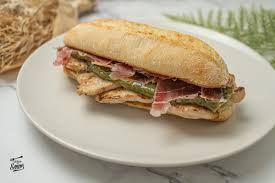 The exquisite ´serranito´ from Ronda is thirty years old. Inventor Benito González managed to make this tapa a culinary masterpiece, using pork fillet, serrano ham, green peppers and ripe tomatoes fresh from the garden. The exquisite ´serranito´ from Ronda is thirty years old. Inventor Benito González managed to make this tapa a culinary masterpiece, using pork fillet, serrano ham, green peppers and ripe tomatoes fresh from the garden.
[Recetas de Cocina de Sergio]
Background
In 1974, when Tobalo González opened ´Bar Benito´, in the popular Barrio San Francisco neighbourhood of Ronda, it was not very common for customers to ask for a tapa.
“Here the farmworkers and the builders’ labourers came and ordered a coffee, a brandy or a glass of wine, but nobody asked for anything to eat,” he said.
But over the years everything changed. His son Benito took over the bar and prepared a complete tapas menu, including ham, cheese, fried fish, scrambled eggs and other delicious delicacies from the Ronda region.
Things worked well and the tables were filled daily with people keen to eat the best produce from the gardens and farms in the area. But as with everything, you have to keep looking for new ideas.
One day in 1990, Benito was eating in a restaurant in Sevilla and they gave him a plate of steaks, fried peppers, tomato and several slices of ham. As you would expect, it was very tasty and then the idea occurred to him: “What if I put all this in a bread roll and offer it as a tapa?”
No sooner said than done. As soon as the first ones were put on sale, they were a hit immediately and customers began to demand what became known as the ´serranito´, a complete and very reasonably-priced tapa, bearing in mind that they normally cost around 1.50 euros.
In the hot summer months, Benito shifted up to 400 serranitos a week and there were even tourists who had heard about it and came to try it. In addition, the tapa spread to most of the bars in Ronda and to many bars and restaurants throughout Andalucía.
But to prepare a good serranito you have to bear in mind several important things. First, that the fillet must be from the pork loin; then, that the oil must be virgin olive oil and, in addition, the tomatoes must be just ripe. Finally, if the pepper comes from the fields at the bottom of the Tajo, so much the better.
Another thing to bear in mind when making an authentic serranito is to use a good quality bread roll baked in Ronda.
¡Buen provecho!
Author’s note:
When I first came to Ronda in 2001, having bought a little flat in the Barrio San Francisco, I introduced myself as a new vecino in the Bar Benito. I was given such a warm welcome by Benito and his regular customers that it became my local whenever I was in town. Sadly it is now closed.
© The History Man (Paul Whitelock)
Tags:
Bar Benito, Barrio San Francisco, Benito, Paul Whitelock, Ronda, serranito, tapa, The History Man, Tobalo González,
 2
Like
Published at 5:24 AM Comments (0)
2
Like
Published at 5:24 AM Comments (0)
What I like about living in the Serrania de Ronda
Monday, September 8, 2025
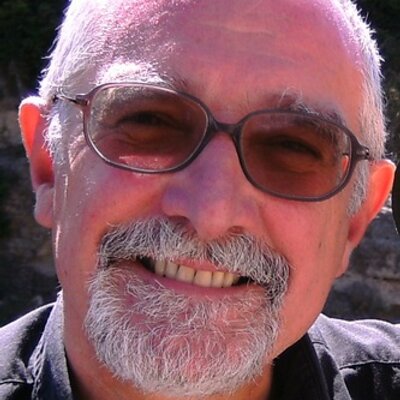 Paul Whitelock has lived around these parts for going on 17 years. Paul Whitelock has lived around these parts for going on 17 years.
First of all in the pueblo blanco Montejaque for some three years and subsequently in the campo outside Ronda.
Here he lists the things he loves about living here.
[Photo courtesy of Secret Serrania]
What I like?
I like:
- waking each morni
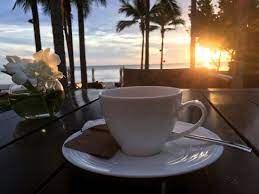 ng beside the woman I love and watching the sun rise through our window ng beside the woman I love and watching the sun rise through our window
- listening to the early morning chattering of the birds in the olive tree in our garden
- hearing the church bell chime Ave Maria at half-past eight each morning
- taking early morning coffee in a busy bar with local workers
[Photo courtesy of TripAdvisor]
- the outdoor way of life on the streets and in the bars and cafes
- nattering with my Spanish neighbours about the weather and the cost of living
- being treated with kindness, respect and trust by the locals
 being known as the guiri that speaks good Spanish being known as the guiri that speaks good Spanish- knowing personally the local cops and my bank manager
- foraging for firewood up the mountain near our house
- not needing to wear socks from April to October
- relaxing in the pool after a hard day’s work
-
[Image of a "guiri" unattributed]
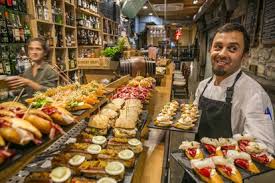 visiting one of the many pueblos blancos in the area, each of them a gem in different ways visiting one of the many pueblos blancos in the area, each of them a gem in different ways- going for a paseo in the early evening and then for tapas with friends
- before going home to the woman I love and watching the sun set behind the mountains
[Photo unattributed]
What don’t I like?
I can’t think of a single thing…!
Well, there are a few things, in actual fact:
bureaucracy,
litter,
noise,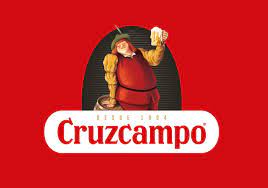
animal cruelty,
Spanish drivers,
the andaluz accent,
and, worst of all, CRUZCAMPO lager!
[Heineken]
But they're the subject of another article .....
Further Reading:
Early morning coffee
What is a guiri?
© Paul Whitelock
Acknowledgements:
Cruzcampo, Heineken, Karl Smallman, Secret Serrania, Trip Advisor,
Tags:
andaluz accent, animal cruelty, bureaucracy, campo, Cruzcampo, early morning coffee, Early morning coffee, foraging for firewood, guiri, Heineken, Karl Smallman, litter, Montejaque, noise, outdoor way of life, paseo, Paul Whitelock, pueblo blanco, Ronda, Secret Serrania, socks, Spanish drivers, tapa, Trip Advisor, What is a guiri?
 0
Like
Published at 9:53 AM Comments (0)
0
Like
Published at 9:53 AM Comments (0)
Ronda is really just a village
Tuesday, August 26, 2025
By Pablo de Ronda
Friday, July 1, 2022 @ 4:34 PM
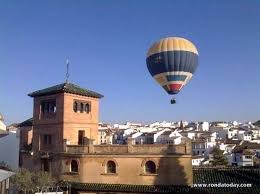 Although it’s a city, with a current population of around 33,000, Ronda has always felt tiny. Just like Madrid, Berlin, Liverpool and London. They are really just big villages in the sense that most of what you want to see as a visitor is within walking distance. Although it’s a city, with a current population of around 33,000, Ronda has always felt tiny. Just like Madrid, Berlin, Liverpool and London. They are really just big villages in the sense that most of what you want to see as a visitor is within walking distance.
[Ronda Today]
In Madrid everything you want to see, eg Puerta del Sol, Plaza Mayor, Parque del Retiro, El Prado, Las Cortes, La Moncloa, is within walking distance or a short metro ride away.
In Berlin everything is centred around Checkpoint Charlie and the Alexanderplatz. Namely the Brandenburg Gate, the German Parliament, the Holocaust Memorial, the TV Tower, the remains of the Berlin Wall.
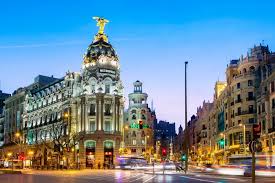 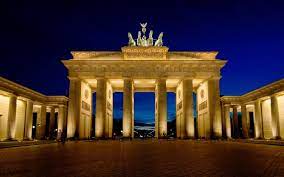
Madrid [Turismo de Madrid] Berlin, Brandenburg Gate [Hoteles Catalonia]
In Liverpool, the Anglican Cathedral, LIPA (Paul McCartney’s fame school), the gents toilets in the Philharmonic Pub, the Everyman Theatre and Paddy´s Wigwam (the avant-garde Roman Catholic Cathedral) are all on Hope Street. It’s then only a 10-minute walk via Matthew Street and the Cavern Club to the glory that is the restored Liverpool Docks with its Granada TV Studios, Tate Liverpool and Liverpool Maritime Museum.
Even in massive London most of the sights/sites are close together. The Houses of Parliament, Buckingham Palace, Madame Tussaud’s, Hyde Park, Harrods, Fortnum and Mason, the London Eye, the Royal Festival Hall, Tower Bridge and Shakespeare’s Globe Theatre are easily managed in a couple of days.
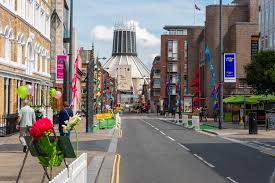 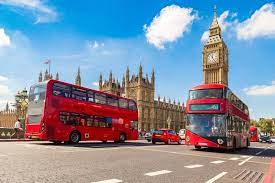
Hope Street, Liverpool [Facebook] London
Ronda
Compared to the above-mentioned cities Ronda really is tiny and all you want to see is within walking distance.
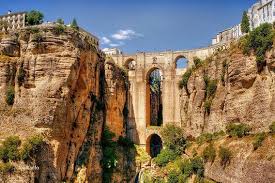 Parque de la Alameda, Plaza de Toros, Parador de Turismo, Puente Nuevo, El Tajo, Casco Antiguo, Palacio de Mondragón, Plaza Duquesa del Parcent, Almocabar Gate, the Arab Baths and the Casa del Rey Moro constitute a walk of a couple of hours. Parque de la Alameda, Plaza de Toros, Parador de Turismo, Puente Nuevo, El Tajo, Casco Antiguo, Palacio de Mondragón, Plaza Duquesa del Parcent, Almocabar Gate, the Arab Baths and the Casa del Rey Moro constitute a walk of a couple of hours.
Puente Nuevo, Ronda [Fenix]
But the main reason it feels like a village is that you are always bumping into someone you know.
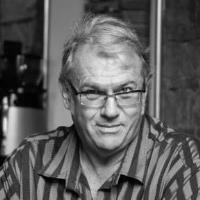 This week alone I bumped into Clive and Elisabeth (ALDI), Antonio; Yaiza and Viviana (Décor Asia), Iain; Geoffrey (LIDL), Michael, Elaine, Malcolm and Hilde; María (Bar La Bodeguita), Nerea and Eduardo (Bar La Flamenca), Manolo and Carmen (Pizzería Michelangelo). This week alone I bumped into Clive and Elisabeth (ALDI), Antonio; Yaiza and Viviana (Décor Asia), Iain; Geoffrey (LIDL), Michael, Elaine, Malcolm and Hilde; María (Bar La Bodeguita), Nerea and Eduardo (Bar La Flamenca), Manolo and Carmen (Pizzería Michelangelo).
So, La Ciudad Soñada or Ciudad del Tajo, as Ronda is sometimes called, truly is a village or even, maybe, just a hamlet (aldea).
Michael Coy [Poetry Soup]
***
Note: Some of these people the "Meter Maid" and I met when we went de tapeo on the eve of mi día santo (Peter and Paul, 29 June). For more about that little “pub crawl”, please read:
De Tapeo en Ronda.
Other articles of possible interest are:
Saints Peter and Paul
What’s in a name? Pedro y Pablo
Note: The original version of this article appeared in July 2022 here:
Ronda is really just a village - Help me, Ronda
© Pablo de Ronda
Photos:
Facebook, Fenix, Karl Smallman, Poetry Soup, Ronda Today, Turismo de Madrid
Tags:
Alexanderplatz, Almocabar Gate, Anglican Cathedral, Antonio, Arab Baths, Berlin, Brandenburg Gate, Buckingham Palace, Casa del Rey Moro, Casco Antiguo, Cavern Club, Checkpoint Charlie, Clive and Elisabeth, Eduardo, Elaine, El Prado, El Tajo, Everyman Theatre, Fortnum and Mason, gents toilets in the Philharmonic Pub, Geoffrey, German Parliament, Granada TV Studios, Harrods, Hilde, Holocaust Memorial, Hope Street, Hoteles Catalonia, Houses of Parliament, Hyde Park, Iain, Karl Smallman, La Moncloa, Las Cortes, Liverpool, Liverpool Docks, LIPA, Liverpool Maritime Museum, London, London Eye, Madame Tussaud’s, Madrid, Malcolm, Manolo, María, Matthew Street, "Meter Maid", Michael Coy, Nerea, Pablo de Ronda, Paddy´s Wigwam, Palacio de Mondragón, Parador de Turismo, Parque de la Alameda, Parque del Retiro, Paul McCartney’s fame school, Paul Whitelock, Plaza de Toros, Plaza Duquesa del Parcent, Plaza Mayor, Puente Nuevo, Puerta del Sol, remains of the Berlin Wall, Ronda, Roman Catholic Cathedral, Royal Festival Hall, Shakespeare’s Globe Theatre, Tate Liverpool, TV Tower, Tower Bridge, www.help-me-ronda.com, Yaiza and Viviana
 0
Like
Published at 10:03 PM Comments (0)
0
Like
Published at 10:03 PM Comments (0)
Bars and Restaurants at or near railway stations in the Serrania de Ronda
Saturday, August 23, 2025
By Paul Whitelock
8 September 2022

Railway sheds (muelles) have been converted into restaurants throughout Spain. Along the railway line down to Algeciras, we are fortunate to have a few which have made a name for themselves. In addition, there is a great choice of other eating establishments on or at stations from Arriate down to San Pablo de Buceite and beyond. In the following article, Paul Whitelock takes a look, starting in …..
ARRIATE
El Muelle de Arriate

This restaurant in the former muelle, railway shed, on the platform at the village station, is consistently and deservedly high in the Trip Advisor ratings. Indeed, it has been number 1 in Andalucía.
Run for 10 years by Dutchman Frank Rottgering the food is outstanding, the wine list is very good and the setting beside the line is delightful.
Added to that, Frank’s personal touch, whereby he greets every table on arrival, then describes the menu to his guests in whichever language they speak: Spanish, English, German and, of course, Dutch. The diners love it, as it instantly makes them feel welcome and special.
Venta El Chozo
100 metres from the station. This is a real locals’ bar where everybody goes to meet up for breakfast, lunch, tapas and dinner. Fish and chips (pavias de bacalao con papas fritas) are on the menu! Recommended.
RONDA
Bar Restaurante La Estacion ADIF Ronda

Despite the somewhat cumbersome name, this railway-owned hostelry, in what looks like a muelle, is really good. It ministers to the needs of rail travellers, as well as to rondeños. The restaurant offers a wide range of tapas and raciones at popular prices.
The décor has a toros theme, with many old posters advertising the Feria de Pedro Romero. The 2022 edition has just taken place (first weekend in September).
In addition, there is sometimes live music on Friday nights.
I recently had breakfast there. Excellent and only 2.50€ (coffee and a mollete con aceite y tomate).
Hotel Cafeteria Andalucia

Diagonally opposite the station is another option. Has a nice terrace. A regular cafeteria. Always busy with Spaniards – a good sign.
LA INDIANA
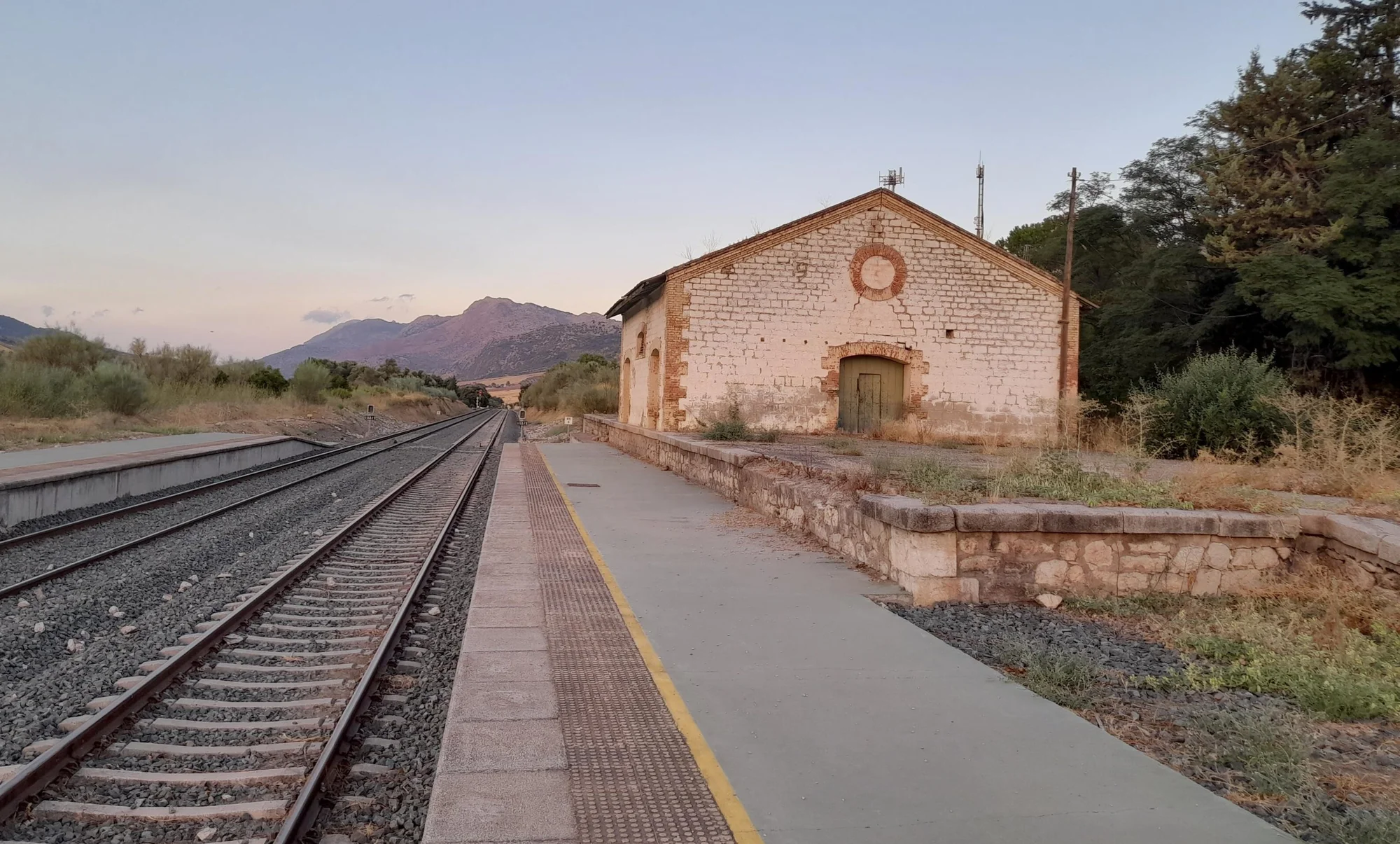
Nothing at or on the station (trains no longer stop here), although there is an abandoned muelle just waiting for someone to do up and open as a restaurant.
Hotel Ronda Valley

On the main road, about 200 metres away (A-374 at km 26) is the Hotel Ronda Valley (actually my local).
Great coffee (Campanini), breakfasts, tapas and Alhambra beer on draught.
BENAOJAN AND MONTEJAQUE
At this station, which serves the villages of Benaojan and Montejaque up the hill, there is a choice within a stone’s throw of the platform.
Within the station precinct itself is
Asador El Muelle
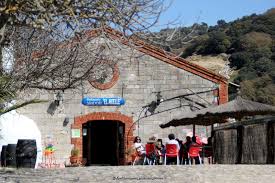 Known locally as Gina's, after the owner. She and husband, chef Cristobal, serve tasty food prepared on their large wood oven. Not for veggies or vegans, this is an eatery for carnivores with big appetites. Known locally as Gina's, after the owner. She and husband, chef Cristobal, serve tasty food prepared on their large wood oven. Not for veggies or vegans, this is an eatery for carnivores with big appetites.
Also on the station is:
Bar Cantina
Here they offer drinks and tapas at value-for-money prices.
Bar Ankanita (formerly Bar Stop)
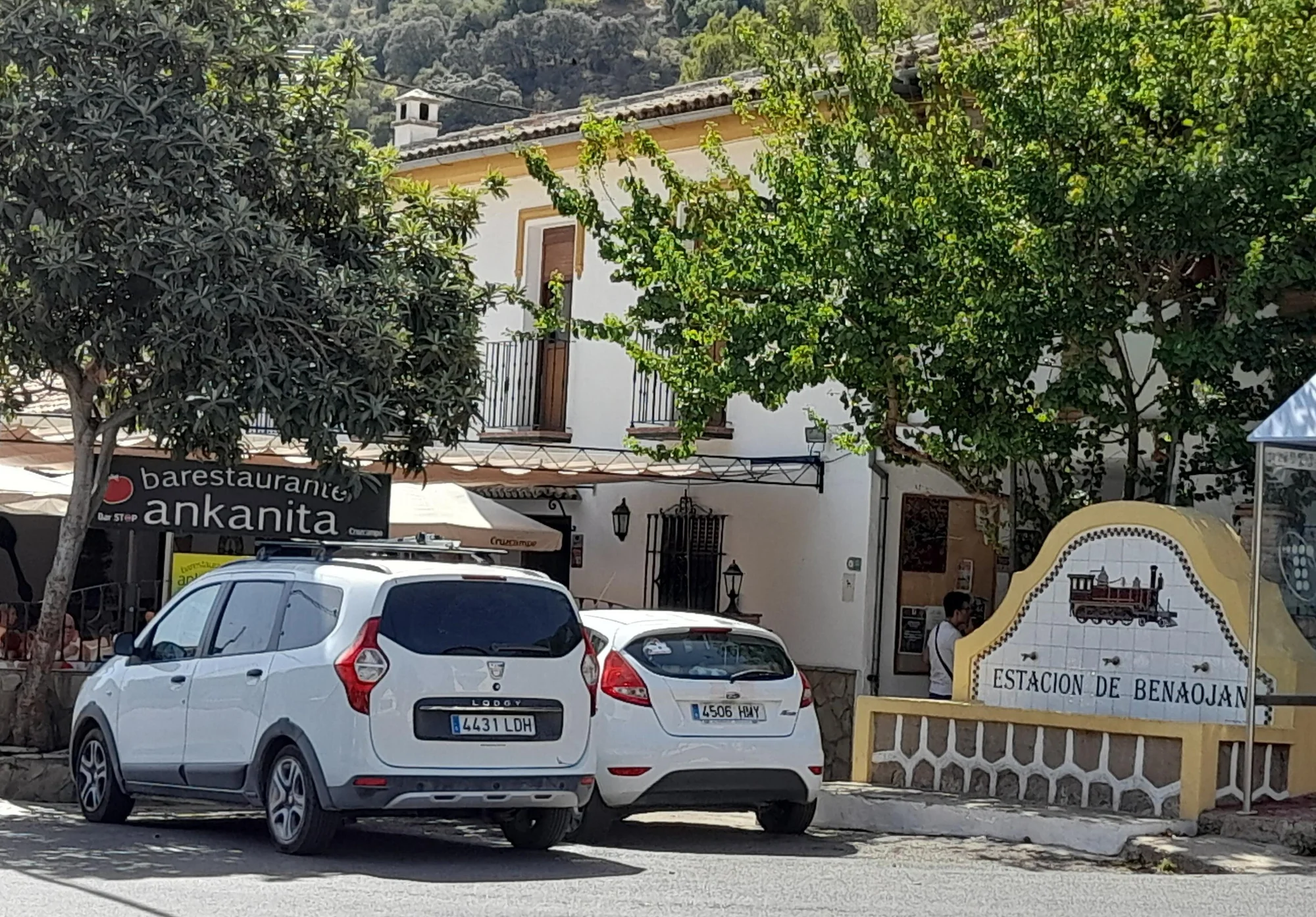
Directly opposite the station, this place has been feeding wholesome food to locals and visitors for years. Now run by Alberto and Diego, late of the celebrated Restaurante Molino del Santo, also in the village, the recently re-named Bar Stop continues this fine tradition.
JIMERA DE LIBAR
Restaurante Quercus
This restaurant, housed in the former muelle on the platform, is unfortunately closed at the moment. We hope it will re-open soon, as it served excellent food for many years.
Bar Allioli
This bar across the road from the station provided great beer, brilliant burgers and live music at weekends for 14 years. Mine hosts, Paul Darwent, a Yorkshireman, and Synnove, his Danish wife, have recently retired, sadly.
However, the good news is that this bar re-opened two weeks ago as Allioli Bar y Más. I was there on the opening night and it was heaving. The new landlord, Jose Antonio, plans to continue with the tradition of live music.
On the opening night local guitarist and singer Marcus Myers provided a great musical background to the buzzing atmosphere in the square outside the bar.
CAÑADA DEL REAL TESORO (ESTACION DE CORTES DE LA FRONTERA)
Specialities of this area include venison stew, mountain lamb, scrambled eggs with asparagus, veal, codfish omelettes, refried stew (fried bread, tomato, garlic, pepper and onion), Swiss chard soup, breadcrumbs with garlic and Guadiaro rabbit.
There is nowhere to eat on or at the station but there are two establishments within a stone’s throw.
Meson-Bar La Cañada (Pili's Bar)

We’ve been here for coffee and breakfast but not a meal as such. They have a delightful little yard at the back which offers a shaded terrace with flowers. Pili and Alonso are very friendly. The reviews of their food are extremely good. Diners love Pili’s home-made dishes, which are generous in portion size and reasonably priced. The café cortado is outstanding.
La Parra
Recently re-opened under new management, this tapas bar is slowly building its reputation.
EL COLMENAR (ESTACION DE GAUCIN)
In this beautiful spot by the River Guadiaro and on the edge of Los Alcorconales (cork forests), there are three places opposite the station and another abandoned muelle, ripe for development.
It had been an asador (carvery) but it has been closed for many a long year.
Bar/Meson España

This traditional bar with a roomy shaded terrace is very popular. Not surprising because the menu is large and varied and the prices will not break the bank.
We ate there last week and the portions were so generous we needed a doggy bag.
Bar Las Flores
This is similar, apparently. Good food at sensible prices. On the day we were there it was closed, unfortunately.
Restaurante Rincon del Cani
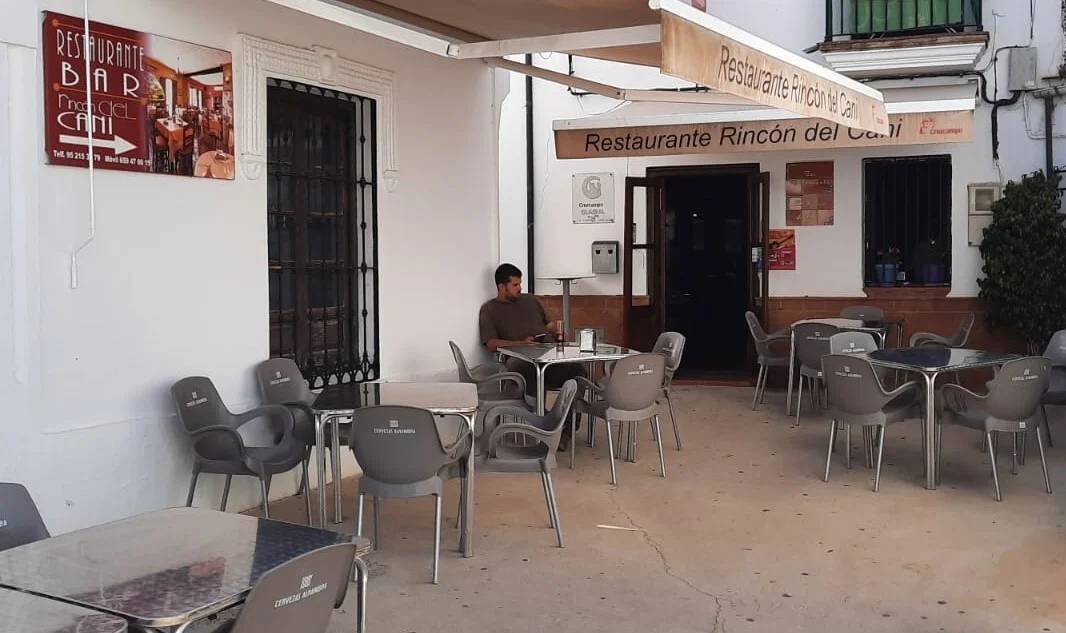
This is tucked away behind the other two. This is slightly more upmarket with gourmet tapas.
SAN PABLO DE BUCEITE
Although outside of the Serrania de Ronda and in Cadiz province, I have included this village as our final stop on this journey, because it too has a restaurant housed in an old muelle.
Restaurante La Estacion

I haven’t had the pleasure of dining here yet but hope to do so soon. Restaurante La Estación has a fine reputation for its setting - with two terraces, one in a garden, the other on the old platform - to the décor, the friendly service and most importantly the quality of the food.
According to the very positive reviews they have received they offer excellent croquettes, salmon and jamón, as well as tasty leche frita, home-made ice cream and chocolate custard. The wine is considered excellent and so is the café cortado.
With thanks to Julie Wilkinson for additional information about the three most southerly stations on this route.
© Paul Whitelock
Photos:
Frank Rottgering, Karl Smallman, Paul Whitelock
Tags:
Allioli Bar y Más, Asador El Muelle, Bar Allioli, Bar Ankanita, Bar Cantina, Bar Las Flores, Bar/Mesón España, Bar Restaurante La Estación ADIF Ronda, Bar Stop, Benaojan, breadcrumbs with garlic, CAÑADA DEL REAL TESORO, codfish omelettes, El Muelle de Arriate, ESTACIÓN DE CORTES DE LA FRONTERA, EL COLMENAR, ESTACIÓN DE GAUCIN, Feria de Pedro Romero, Frank Rottgering, Guadiaro rabbit, Hotel Cafeteria Andalucía, Hotel Ronda Valley, JIMERA DE LIBAR, Julie Wilkinson, Karl Smallman, La Indiana, La Parra, Los Alcorconales, Marcus Myers, Meson-Bar La Cañada, Montejaque, mountain lamb, muelles, Paul Whitelock, pavias de bacalao con papas fritas, Pili’s Bar, railway sheds, refried stew, Restaurante La Estación, Restaurante Quercus, Restaurante Rincon del Cani, River Guadiaro, SAN PABLO DE BUCEITE, scrambled eggs with asparagus, Swiss chard soup, veal, venison stew, Venta El Chozo
 1
Like
Published at 10:46 PM Comments (0)
1
Like
Published at 10:46 PM Comments (0)
De Tapeo in Ronda
Saturday, August 23, 2025
De tapeo en Ronda
Friday, July 1, 2022
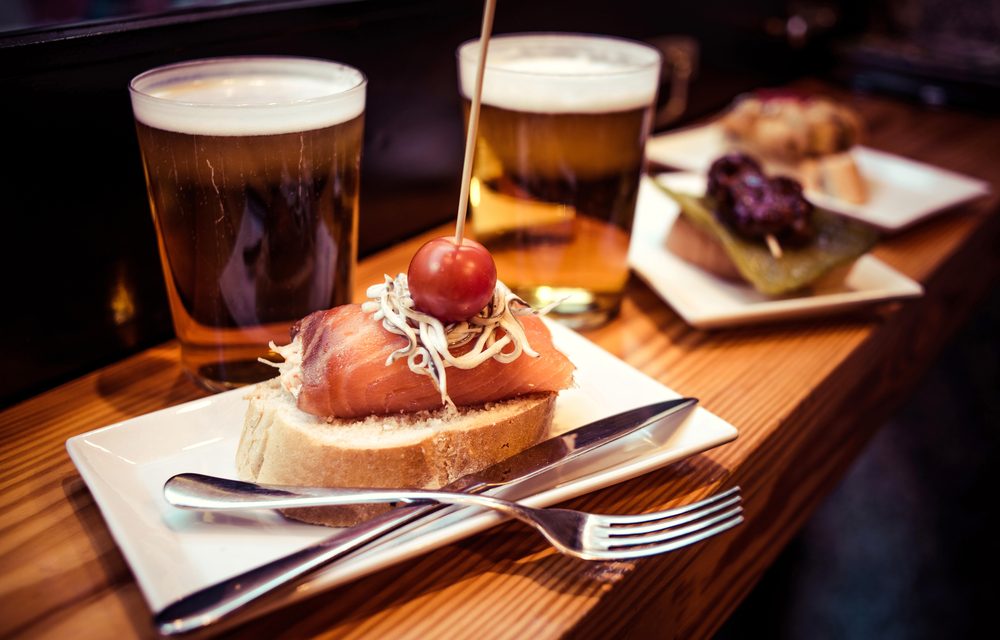
Tapear is all about the tapas, whereas an English pub crawl is all about the beer. For older English folk it’s about sampling a range of cask ales, easy in the northwest of England where I used to live. For younger people it’s about guzzling as much disgusting lager or IPA as possible to get as p****d as possible.
Whilst I have to confess, I’ve participated in both English versions of this pastime, I much prefer the Spanish option.
So, off we went.
Where did we go?
Rather than go to the tried and tested bars we know from over a decade of living here, we decided to try out some new places.
We started at Bar Mimanuela in Plaza Carmen Abela. It used to be a jeweller’s but since the pandemic, the jeweller retired and the premises have re-opened as a rather stylish but unpretentious café bar with a lovely terrace outside the Caja Rural.
A beer and two tapas each for 13 euros was perfectly acceptable. Rita chose snails (caracoles) and mejillones. I had alcachofas con jamón and anchoa cantábrica.
Well-presented and delicious. The owners are delightful, by the way.
Inside they have a permanent exhibition of paintings by Elaine Moore, an English artist long resident in Ronda and a good friend of ours.
We then shuffled up Calle Tiendas to Bar Bodeguita, also unknown to us. And guess who was sitting there talking on his mobile? None other than Michael, who was to blame for me meeting the Meter Maid (her name is Rita and she is lovely!) at the Feria de Pedro Romero in September 2008.
We hadn’t seen Michael for a while so after warm hugs (Rita, not me!) we joined him at his table. Serendipitously he had been on the phone to Malcolm, who is the husband of the afore-mentioned artist Elaine Moore. They were on their way to join us! ¡Qué coincidencia!
Another friend, Hilde from Belgium, was also on her way.
At the table next to us I recognised Maria, a customer of one of my locals, Venta El Puente in La Indiana.
After a beer and a tapa and some catching up, Rita and I moved on to Bar La Flamenka, which in a previous incarnation had been my internet café of choice back in the day before smartphones and WiFi at home.
The terrace was full, so we sat at a table for two just inside the door. I kept noticing this fat, long-haired, old guy sitting opposite a beautiful, elegantly dressed septuagenarian lady! Oh! Blimey! They were us ..... reflected in a mirror!
Also in that bar was Eduardo, another customer from Venta El Puente. Guess who he was with - Nerea, a waitress from said bar. It was the bar’s dia de descanso. I later established that Nerea and Eduardo are an item.
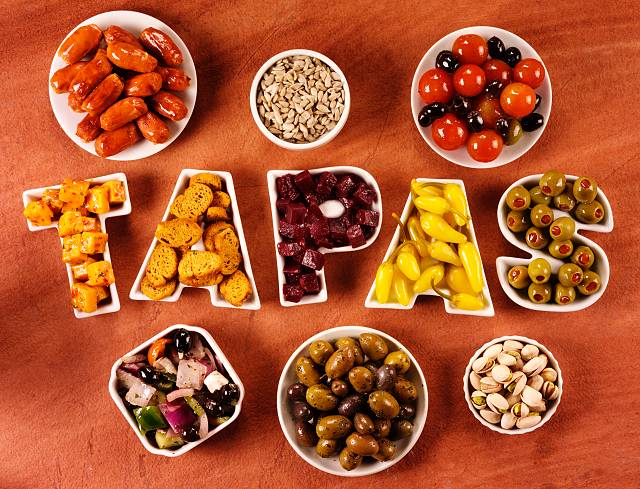
The tapas here were arguably the best so far. Again, we had two each plus a drink. 12 euros.
Next up was El Almacen. The last time I’d been there was that fateful night with Michael in 2008 when I later met Rita. It was under different management back then. I gather it’s now the hottest place in town.
We had a beer and a tapa each – 7 euros.
It was now quite late, so we decided to head for home. On our way back to the car we passed Pizzería Michelangelo. Sitting outside were Manolo (El Corcho) and his wife Carmen, the owners of Venta el Puente, the local I mentioned earlier.
What a great night. Going out in a foreign country and bumping into loads of people you know. Makes you feel quite at home.
I must add that Rita’s beers were cervezas sin, as she was driving.
An earlier version of this article appeared here:
De Tapeo in Ronda - Help me, Ronda
© Paul Whitelock
Further reading:
Ronda is just a village.
With thanks to:
Tags:
alcachofas con jamón, anchoa cantábrica, Bar Bodeguita, Bar La Flamenka, Bar Mimanuela, Calle Tiendas, caracoles, cask ales, de tapeo en Ronda, Eduardo, Elaine Moore, El Almacen, English pub crawl, Feria de Pedro Romero, Hilde, La Indiana, mejillones, Meter Maid, Michael Coy, Nerea, Paul Whitelock, Plaza Carmen Abela, Rita, September 2008, tapas, tapear, Venta El Puente,
 0
Like
Published at 8:23 PM Comments (0)
0
Like
Published at 8:23 PM Comments (0)
Ronda Walking Tour
Thursday, August 21, 2025
By Paul Whitelock
7 July 2022
I’ve lived in the Ronda area for 14 years and know the City of Dreams like the back of my hand, so I wasn’t expecting too much from this audio guide. How wrong could I be?

Although I was familiar with every location included on this tour, I learned loads that I didn’t know from this very thoroughly researched guide by Clive Muir, of the website Ronda Today (www.rondatoday.com). In particular, the historical aspects.
When you start the tour via your mobile phone, Clive’s voice is easy on the ear and the accompanying music by local professional guitarist Paco Seco made for a very pleasant couple of hours.
We broke our journey in the Barrio San Francisco, where we had an excellent late breakfast at Bar Sánchez by the Almocabar Gate.

I was accompanied on the tour by friends Brenda and Jeremy White, who own property locally and have been coming to the Serrania de Ronda regularly for over 20 years. Like me, they thought they knew all there was to know. They were also wrong.
At the end of the tour, we gratefully sank a refreshing beer in Bar El Rincón de la Manzanilla on Calle Virgen de Los Remedios and discussed the audio tour we had just taken.
“I enjoyed the tour very much,” said Brenda, “although I felt some of the historical information was a bit long-winded.”
“I disagree entirely,” responded Jeremy. “I found the history sections fascinating and I learned a lot.”
We all agreed that we had spent a delightful morning and had enjoyed the whole experience immensely. Strangers to Ronda would find this audio guide fascinating, as well as informative, we felt.
You can get it here:
Ronda, Andalucia's 'city of dreams': A walking tour » Ronda audio tour » VoiceMap
This review first appeared on Ronda Today in 2022
© Paul Whitelock
Acknowledgements:
Clive Muir, Ronda Today
Photos:
Clive Muir, Paul Whitelock
Tags:
Almocabar Gate, audio guide, Bar El Rincón de la Manzanilla, Barrio San Francisco, Bar Sánchez, Brenda and Jeremy White, City of Dreams, Clive Muir, Paco Seco, Paul Whitelock, Ronda, Ronda Today, Serrania de Ronda, walking tour, www.rondatoday.com
 0
Like
Published at 10:16 PM Comments (0)
0
Like
Published at 10:16 PM Comments (0)
How did Ronda get the name "City of Dreams"?
Thursday, August 21, 2025
RILKE. Who?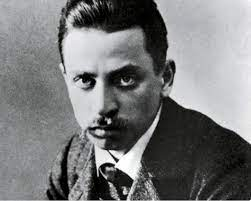
By The Culture Vulture
Monday, February 21, 2022
A street bears his name, and there is a statue in his honour in the grounds of the Hotel Reina Victoria.
Background
Rainer Maria Rilke was born in Prague, Czechoslovakia, at that time part of the Austro-Hungarian empire, in 1875. He was raised as a girl for the first few years of his life by his devoutly Catholic mother to ‘replace’ a dead sister. Later he was sent to school at a military academy, which he hated.
In Munich he met Russian-born psychoanalyst and author Lou Andreas Salomé, who remained a strong intellectual influence on Rilke for the rest of his life.
When their affair ended, Rilke lived briefly in an artists’ colony in Worpswede, near Bremen. There he met and later married the sculptor Clara Westhoff, but the couple soon separated, and Rilke remained deeply ambivalent about intimate relationships for the rest of his life.
In 1902 he moved to Paris but although Rilke lived in Paris on and off for more than a decade, he experienced the city as an ordeal.
In late 1912 Rilke had a titanic case of writer’s block. Unable to find poetic inspiration, he left his home in Paris and travelled south to Toledo, hoping its dramatic architecture, celebrated landscape and the paintings of El Greco would reignite his creativity. But the inspiration he was seeking eluded him. Instead, he was gripped by a profound sense of alienation.
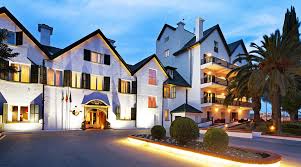 Rilke travelled on to Cordoba and Seville, but his sense of alienation only deepened. On a whim he took a train to Ronda, where he took a room in the Hotel Reina Victoria, built in the 19th century to attract well-to-do British tourists from Gibraltar. Looking out over the deep ravine which divides the city in two, Rilke was transfixed by the landscape. Writing enthusiastically to another of his female friends, he praised the “strong and splendid air” of Ronda, and the mountains which “spread out like a psalter you could sing psalms from”. Rilke travelled on to Cordoba and Seville, but his sense of alienation only deepened. On a whim he took a train to Ronda, where he took a room in the Hotel Reina Victoria, built in the 19th century to attract well-to-do British tourists from Gibraltar. Looking out over the deep ravine which divides the city in two, Rilke was transfixed by the landscape. Writing enthusiastically to another of his female friends, he praised the “strong and splendid air” of Ronda, and the mountains which “spread out like a psalter you could sing psalms from”.
Hotel Reina Victoria [Catalonia]
The epithet for Ronda, Ciudad Soñada (City of Dreams) is attributed to Rilke: “... He buscado por todas partes la ciudad soñada y al fin la he encontrado en Ronda.” (“… I have sought everywhere the city of my dreams, and I have finally found it in Ronda.”).
In Ronda his poetry finally began to flow.
'For Rilke, Ronda was a place of liberation,’ says Tony Stephens, one of the world’s foremost Rilke scholars, and emeritus professor of German at Sydney University.
‘The poems he wrote there are quite experimental. He kept them back from his publisher. One of the great poems he wrote there, The Spanish Trilogy, wasn’t published until after his death.’
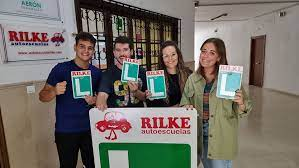
Rilke is arguably the best-known German poet, and a towering figure in 20th century literature. His stay in Ronda proved to be a turning point in his poetic development, but the poems he wrote there have only rarely been translated, and are almost unknown in English.
In fact, Rilke made some of the most daring and innovative poetry of the early 20th century thrive during his stay in Ronda. In The Spanish Trilogy, written in the weeks from December 1912 to January 1913, he achieves, at least temporarily, the unity of self and world which was the ultimate goal of his tormented pilgrimage.
Why Rilke chose not to publish this remarkable poem in his lifetime remains a mystery. But this and some of the other poems he wrote in Ronda, such as The Raising of Lazarus and The Sixth Elegy, certainly restored his confidence.
Read new translations of Rilke's poems by Tony Stephens and Tom Morton
The Spanish Trilogy
The Sixth Elegy
The Raising of Lazarus
In 2012, the Real Maestranza de Caballería de Ronda, a cultural institute within the world’s oldest functioning bullring, commissioned a special edition of Spanish translations of the letters and poems Rilke wrote in Ronda and an essay by Stephens to mark the centenary of Rilke’s visit.
The director of the institute, Ignacio Herrera de La Muela, agrees with Stephens that Rilke is primarily a European, rather than a purely Austrian or German poet, with a unique place in the literary and cultural landscape of the 20th century. Herrera must be onto something; the centenary volume, En Ronda. Cartas y Poemas, was voted one of the best books in Spanish that year— a sign that Rilke’s unique poetic voice continues to speak to readers nearly a century after his death.
In the last years of his life, after the First World War, Rilke finally settled in the French speaking part of Switzerland, in a chateau which his patron Werner Reinhart placed at his disposal.
Until then, says Stephens, Rilke ‘constantly roamed Europe on a tormented pilgrimage’. He never worked, relying on the generosity of patrons and his long suffering publisher, who also footed the bill for his stay in Ronda.
Footnote
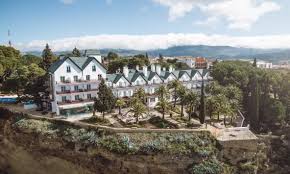 The Reina Victoria hotel was taken over by the Catalonia Hotels group and was remodelled in 2013. As a result Room 208 is no longer the Rilke Museum. However, a few preserved artefacts have been made into a tiny exhibition of Rilke’s realia behind a glass display case. There are a couple of books, a photo of the poet and a framed page of something he’d written in German. Intriguingly there is also an old copy of his hotel bill. The Reina Victoria hotel was taken over by the Catalonia Hotels group and was remodelled in 2013. As a result Room 208 is no longer the Rilke Museum. However, a few preserved artefacts have been made into a tiny exhibition of Rilke’s realia behind a glass display case. There are a couple of books, a photo of the poet and a framed page of something he’d written in German. Intriguingly there is also an old copy of his hotel bill.
An earlier version of this article appeared here in February 2022:
How did Ronda get the name "City of Dreams"? - Help me, Ronda
© Paul Whitelock
Tags:
Clara Westhoff, Ignacio Herrera de La Muela, Paul Whitelock, Real Maestranza de Caballería de Ronda, Reina Victoria, Rilke, Room 208, The Raising of Lazarus, The Sixth Elegy, The Spanish Trilogy, Tom Morton, Tony Stephens, Werner Reinhart
 0
Like
Published at 9:28 PM Comments (0)
0
Like
Published at 9:28 PM Comments (0)
The "Other Ronda Valley"
Wednesday, August 20, 2025
A first impression of the City of Dreams
By Paul Whitelock
Sunday, November 27, 2022
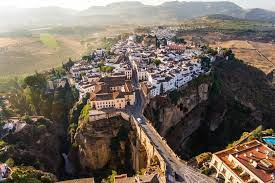
Paul Whitelock wrote this article around 15 years ago when he first moved to Ronda, the main town of the Serrania de Ronda. Being the grandson of a South Wales miner, he was more familiar with the Rhondda Valley near Swansea, until he discovered the Andalucían version.
Ronda from the air [Photo: unattributed]
Hence the title of this article.
Approaching Ronda from the coast
As we turned the corner between two huge rocks, we glimpsed Ronda shimmering in the distance, white and bright atop its huge cliff. Moments later it disappeared from view, but then there it was again in all its glory as we drew nearer to our destination.
Approaching this most impressive of the white towns in Andalucía from either the Costa del Sol or from Algeciras and Gibraltar is to marvel at its location and to be impressed by the ingenuity of the Moors who first established a settlement there 13 centuries ago. Small wonder, then, that Ronda is part of the Grand Tour of Andalucía, along with Granada, Sevilla and Córdoba.
Small wonder also that Ronda numbers amongst its 35 000 inhabitants as many as 656 foreign residents, according to the most recent census. As a resident myself now, it somehow doesn’t seem that many. "Expats" are there if you want them, but they are easily avoided.
The popularity of this town is demonstrated by the groups of day-trippers from the coast who wander the streets in their shorts and sandals, marvelling at the stunning architecture in the Old Moorish Quarter, staring unbelievingly into the deep gorge, el Tajo, that divides old Ronda from the new, and taking advantage of the wide range of shops at their disposal.
Occasionally, these visitors may wish they’d donned something warmer for Ronda is 723 metres above sea level and can be chilly and wet out of season. On such days the enterprising proprietors of the tourist shops do good business selling plastic macs and umbrellas.
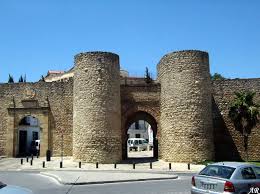 Arriving at the Almocábar gate on the southern edge of town you are in what was the old Moorish cemetery, now the up and coming San Francisco quarter. Walk through the gate and up the cobbled street via a short visit to the bell tower of the church of the Holy Spirit, Espíritu Santo, continue up the vehicle road for 100 metres before climbing the steps into Duquesa de la Parcent square, which is home to the delightful Town Hall and the intriguing architectural mix of the Cathedral Church of Santa María la Mayor. Arriving at the Almocábar gate on the southern edge of town you are in what was the old Moorish cemetery, now the up and coming San Francisco quarter. Walk through the gate and up the cobbled street via a short visit to the bell tower of the church of the Holy Spirit, Espíritu Santo, continue up the vehicle road for 100 metres before climbing the steps into Duquesa de la Parcent square, which is home to the delightful Town Hall and the intriguing architectural mix of the Cathedral Church of Santa María la Mayor.
Puerta de Almocabar [Andalucia Rustica]
Head for the back right corner of the square and wander at random through the old Arab quarter with its magnificent mansions, palaces and tiny squares full of orange and lemon trees. Do not miss the Palacio de Mondragón with its delightful patios and gardens, which also houses the Municipal Museum. Also worth a visit is the Casa de Don Bosco, in honour of the canonised Italian priest St John Bosco, who never actually visited Ronda!
Emerging from the old quarter and turning left you find yourself on the 18th Century Puente Nuevo, the newest of three bridges joining the two halves of the town.
 The view from either side of the bridge is spectacular: to the west a fertile valley with a distant backdrop of brooding mountains; to the east deep cliff walls topped by hanging houses. The view from either side of the bridge is spectacular: to the west a fertile valley with a distant backdrop of brooding mountains; to the east deep cliff walls topped by hanging houses.
A trickle of water runs through the bottom of the gorge 130 metres below whilst hundreds of birds nest in the cliff faces. At dusk these rise into the air; among them Crag Martins, Pallid Swifts, Black Redstarts, Blue Rock Thrushes, Choughs, Griffon Vultures, Rock Doves and Blackcaps.
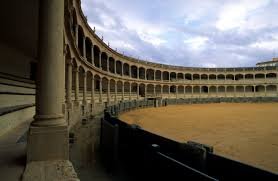 Beyond the modern and stylish Parador de Ronda, a luxury four-star hotel, you find yourself at one of the oldest and most beautiful of Spain’s bullrings. Ronda is the home of modern bullfighting, which was developed by one Pedro Romero born 252 years ago in the town. Built in 1785 it boasts the largest bullfighting arena in the world, yet has one of the smallest crowd capacities. Tickets for the infrequent bullfights held here are very difficult to come by. Nevertheless, the Plaza de Toros is open to the public and houses an interesting museum about bullfighting. Beyond the modern and stylish Parador de Ronda, a luxury four-star hotel, you find yourself at one of the oldest and most beautiful of Spain’s bullrings. Ronda is the home of modern bullfighting, which was developed by one Pedro Romero born 252 years ago in the town. Built in 1785 it boasts the largest bullfighting arena in the world, yet has one of the smallest crowd capacities. Tickets for the infrequent bullfights held here are very difficult to come by. Nevertheless, the Plaza de Toros is open to the public and houses an interesting museum about bullfighting.
Ronda's bullring [Wikipedia]
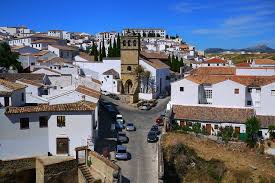 Away from the bullring and back down the northern side of the Tajo you come to the Fountain of the Eight Spouts, Fuente de los Ocho Caños, before crossing the Roman bridge back to the other side, and climbing through the Arco de Felipe V, the Arch of Philip V. Away from the bullring and back down the northern side of the Tajo you come to the Fountain of the Eight Spouts, Fuente de los Ocho Caños, before crossing the Roman bridge back to the other side, and climbing through the Arco de Felipe V, the Arch of Philip V.
This whole area was used as the location for the 1984 film of the opera Carmen, starring a very young Placido Domingo.
Padre Jesus [Photo: Nic Freeman]
A brief detour down the hill takes the visitor to the Arab Baths, Baños Árabes, which are a delight. Recently restored the tour includes a film presentation (also in English) about the history of Ronda dating back to Roman times. Back up the hill and you come to the Casa del Rey Moro and the Water Mines. Climb down 365 steps hewn from the interior of the cliff to the bottom of the gorge to see where the Arabs used to ‘mine’ their water and transport it up to the town above.
On resurfacing you can get your breath back in the beautiful gardens.
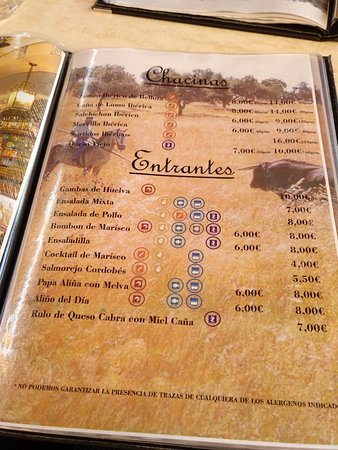 After all this sightseeing it’s time for something to eat and drink; the choice is amazing. There are innumerable bars and restaurants where you can nibble on the wide variety of tapas, sit down for a reasonably priced and wholesome three-course menu of the day for about £8 sterling, or, if you want to, splash out on an a-la-carte meal. After all this sightseeing it’s time for something to eat and drink; the choice is amazing. There are innumerable bars and restaurants where you can nibble on the wide variety of tapas, sit down for a reasonably priced and wholesome three-course menu of the day for about £8 sterling, or, if you want to, splash out on an a-la-carte meal.
Specialities of the region include cured ham, bull’s tail, suckling pig, wild boar, rabbit, goat and other game dishes.
For vegetarians there are interesting choices such as fried aubergines in honey, wild asparagus and a wide range of tasty salads.
A Ronda menu [Photo: TripAdvisor]
Final Thoughts
Ronda, traditional Spain at its best.
As a taxi driver in another part of Spain once told me: “Aaa, Ronda, un sitio para volver” – a place to return to over and over again.
That’s what I did and Ronda never disappointed.
Now I live in the area full time, but that’s another story, for another day ...
Note:
An earlier version of this article first appeared here in November 2022:
The other "Ronda valley" - Help me, Ronda
© Paul Whitelock
Photos:
Andalucia Rustica, Freepik, Karl Smallman, Nic Freeman, Real Maestranza, Wikipedia
Tags:
Andalucia Rustica, Arab Baths, Arco de Felipe V, Baños Arabes, bull’s tail, "Carmen", Casa del Rey Moro, Casa Don Bosco, cured ham, fried aubergines in honey, game dishes, goat, Karl Smallman, Nic Freeman, Ocho Caños, Pedro Romero, Placido Domingo, Plaza de Toros, rabbit, Ronda, suckling pig, tasty salads, vegetarian, water mine, Wikipedia, wild asparagus, wild boar
 1
Like
Published at 5:48 PM Comments (0)
1
Like
Published at 5:48 PM Comments (0)
Spam post or Abuse? Please let us know
|
|